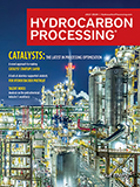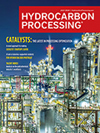Online Exclusive: Court ruling could mean big PSM liabilities for industry
By J. R. Puskar, Prescient Technical Services
The 10th Circuit Court of Appeals made a recent, important ruling (October 27th filing) that can have significant impacts to OSHA process safety management (PSM) facilities throughout the U.S. The OSHA PSM rules, issued in 1992, mandate that facilities with more than 10,000 lb of flammable liquids, along with 137 listed highly hazardous chemicals, complete certain risk management protocols in the interest of safety.
The court ruled that the OSHA PSM regulations applied to a boiler that exploded at a refinery, even though it did not contain highly hazardous chemicals. The boiler was deemed part of a process covered by the regulation because it was "interconnected with steam piping to two vessels that contained flammables that were PSM-covered processes," and also because the boiler was "located such that a highly hazardous chemical could be involved in a potential release."

This ruling could make for additional liabilities to PSM facilities that did not, in the past, consider boilers and fired equipment as "PSM-covered processes." Central boiler plants providing steam to hazardous chemical operations that triggered a facilities PSM requirement may now need to be considered for compliance as covered processes, according to this ruling.
Typical industry impacts. Within the refining sector, it could be interpreted that if boilers and steam systems are connected to PSM processes, then fired heaters with hazardous materials directly circulating within tubes within these heaters makes them PSM-covered processes.
LNG facilities use several types of fired processes for vaporization. These fired devices and pipeline heaters could be interpreted to connect to the LNG piping and vessels in the same manner as the boiler at the refinery was considered to be connected. This could mean that all LNG-related fired equipment could be considered to now be PSM-covered processes.
Typical equipment impacts. If fired equipment and systems were not considered PSM-covered facilities, there could be considerable work ahead for compliance. Compliance requirements are covered in detail in the OSHA PSM Standard, but at a minimum it means things like the following for each boiler system or fired device:
- Documentation including materials of construction, P&ID drawings and design standards used
- The need to conduct a process hazard analysis (PHA), using one of the approved methods for the central boiler facilities and/or fired heaters or devices
- The need to explicitly identify codes and standards used in designs
- Evidence of maintenance, safety-related inspections and testing programs
- Detailed operating procedures including startup/shutdown, normal operations and emergency operations
- Training of employees on maintenance and procedures
- Evidence that equipment complies with generally accepted good engineering practices
- P&ID drawings
- Identification of previous incidents that may have had catastrophic consequences
- Administrative and engineering controls that could be applied to limit hazards, and consideration for the consequences of the failure of these controls.
What do you need to do now? Your facility was required to complete PHAs on all "covered facilities and processes." These PHAs are supposed to be reviewed and updated at least every 5 yr, as stated:
1910.119(e)(6): At least every five (5) years after the completion of the initial process hazard analysis, the process hazard analysis shall be updated and revalidated by a team meeting the requirements in paragraph (e)(4) of this section, to assure that the process hazard analysis is consistent with the current process.
1910.119(e)(7): Employers shall retain process hazards analyses and updates or revalidations for each process covered by this section, as well as the documented resolution of recommendations described in paragraph (e)(5) of this section for the life of the process.
You should attempt to find these documents and determine whether or not the boiler and/or fired systems that might now be covered processes were indeed considered in the past. If these devices were not considered, you should now make them part of your program and work to complete all the compliance requirements demanded by the standard.
Ignorance of the law and inaction are never effective defenses. Failure to comply with these requirements creates additional liabilities that could be a problem if an incident were to occur. It is often the case that when industrial accidents occur, OSHA findings play a key role in civil findings.
Compliance should not be viewed as something that would be costly or burdensome. In a paper the author presented for the Association for Iron and Steel Technologies in October 2020, "Combustion system reliability enhancements disguised as safety code compliance," it is described how safety code compliance for fired equipment can actually provide five key components of value: safety, reliability, environmental benefits, asset life extension and maintenance efficiencies. These components of value can far exceed compliance costs if they are implemented properly and if a long-term perspective is taken.
Literature cited
- Tenth Circuit Court of Appeals Ruling, filed October 27, online: https://law.justia.com/cases/federal/appellate-courts/ca10/19-9533/19-9533-2020-10-27.html
- OSHA PSM Standard, "Process safety management of highly hazardous chemicals," U.S. Department of Labor, online: https://www.osha.gov/laws-regs/regulations/standardnumber/1910/1910.119
- Puskar, J. R., "Combustion system reliability enhancements disguised as safety code compliance," Association for Iron and Steel Technologies, October 27, 2020.
Author

John R. Puskar is a licensed professional engineer who has been practicing in the field of fired equipment safety for more than 35 yr. He has served on a number of safety code committees, including for NFPA, ASME and API. Mr. Puskar created the world's largest industrial fired equipment safety engineering organization, CEC Combustion Safety, and sold it in 2011. He has published more than 50 journal articles and presented at more than 75 conferences and training workshops. His book, Fuels and Combustion Systems Safety—What you Don't Know Can Kill You!, was published in 2014 by John S. Wiley & Sons. Mr. Puskar was awarded the prestigious ASME national Uzgiris-Barnett Safety Award Medal in 2015. He has served as a consultant for fired equipment safety programs for many Fortune 100 manufacturing organizations and utilities including National Grid, AES, Ford Motor Co., General Motors, Alcoa, US Steel, ArcelorMittal and many others.






Comments